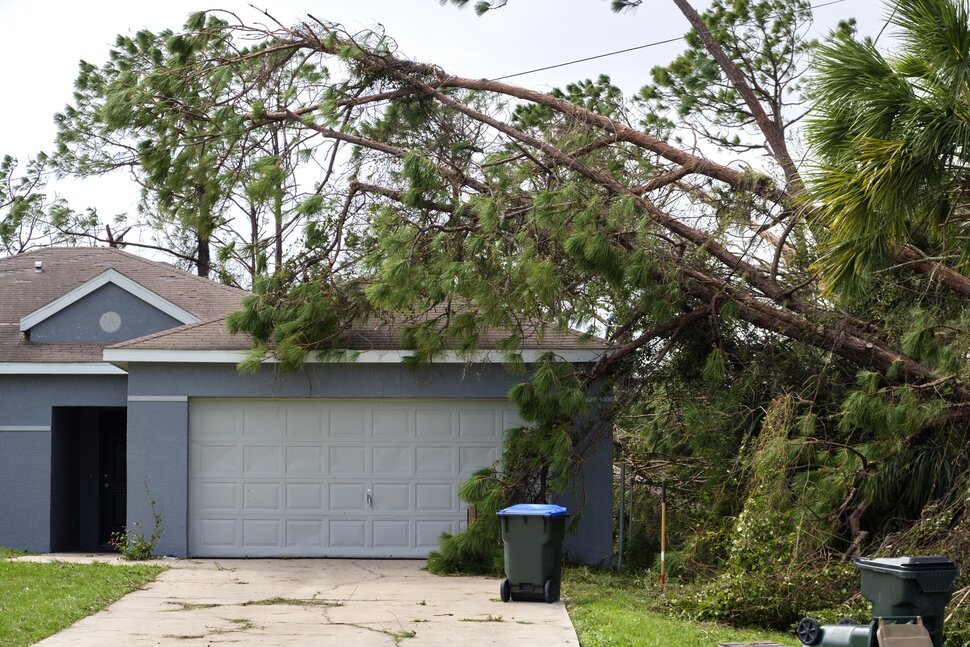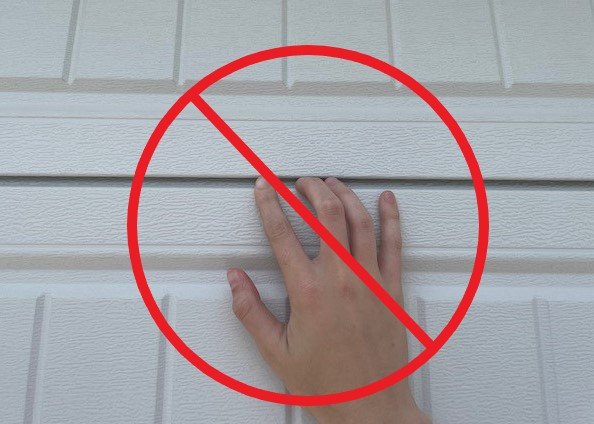Data reveals homes without proper garage door protection are far more susceptible to catastrophic damage during a storm.
Leslie Chapman-Henderson knows better than most the devastation high-wind storms can have on homes. As president and CEO of the nonprofit Federal Alliance for Safe Homes (FLASH), based in Tallahassee, Florida, she often visits hurricane-impacted areas to conduct post-storm investigations.
She and her team noticed a trend while on-site – the homes that suffered the most wind damage almost always had a garage. But it wasn’t until recently that their observations were quantified.
Chapman-Henderson points to a 2023 analysis by the National Institute for Standards and Technology that shows maintaining an intact garage door during wind speeds of up to 135 mph correlated with the structural integrity of the home: Homes with intact garage doors following a severe wind event are likelier to retain their roofs and the walls adjacent to the garage.
“This was the fifth year of the study, which surveys 500 people in 11 hurricane-prone states annually. It showed the garage door is the first place to fail, but 60% of the surveyed did not know they could protect it,” says Chapman-Henderson.
2024 Forecast: Busy Storm Season
Forecasters at the National Oceanic and Atmospheric Administration’s Climate Prediction Center predict above-normal hurricane activity in the Atlantic basin this year. NOAA’s outlook for the 2024 Atlantic hurricane season, which spans from June 1 to Nov. 30, is a range of 17 to 25 total named storms (winds of 39 mph or higher). Of those, eight to 13 are forecast to become hurricanes (winds of 74 mph or higher), including four to seven major hurricanes (category 3, 4 or 5, with winds of 111 mph or higher).
This follows a busy 2023 hurricane season: The Atlantic basin saw 20 named storms, which ranks fourth for the most named storms in a year since 1950. Seven storms were hurricanes and three intensified to major hurricanes. An average season has 14 named storms, seven hurricanes and three major hurricanes.
Who Should Protect Their Garage Door Openings?
Garage doors are vulnerable during storms because they are your home’s largest and weakest openings. A single-car garage door can usually resist wind forces better than two-car garage doors. The same goes for doors without glass or glazing unless the glass is impact-resistant. However, reinforcing your door or having a wind-rated garage door can protect your home from pressurization damage.
“It’s not just hurricanes, it’s relevant for everyone east of the Rockies,” says Chapman-Henderson. “Reinforcing your garage door is effective in tropical storms, tornadoes or derechos.”
When a hurricane moves debris and rips off a garage door, pressure comes inside the home, she explains. “Eventually, it increases until it explodes your home from the inside out like a balloon popping.”
Garage doors are given wind ratings to describe the wind load they can handle. The wind rating or reinforcement needed will vary depending on your home’s location.
“The further south you are in Florida, the heavier the wind load is on the door,” says Tim Nickerson, general manager for DGD Garage Doors’ Orlando and East Florida region.
South Florida, including the area surrounding Miami-Dade County, is considered a high velocity hurricane zone, seeing the strongest winds in the state. Due to its intense wind levels, Miami-Dade building requirements are stringent and modeled as the gold standard for impact ratings, protecting up to 200 mph winds.
“The further inland you are in a hurricane state, the less likely you are to experience extreme winds, so you can have a lower-rated garage door,” Nickerson says.
Ways to Protect Your Garage Door Opening
“Thankfully, protecting your garage opening is affordable and straightforward,” says Chapman-Henderson. There are generally three garage door opening solutions for homeowners to choose from.
1. Install garage door braces.
2. Cover the door with an impact-rated panel or covering.
3. Replace it with a new wind load door.
These solutions start at a few hundred dollars for a DIY-savvy homeowner and go up to several thousand dollars if installed professionally.
The best solution will ultimately be based on your home’s location, budget and most common storm threat. No matter what solution you choose, ensure that it meets the required wind rating for your location. Counties can have different wind ratings due to the wind pressure they experience and can supersede any state requirements because of their wind exposure.
1. Adding Garage Braces to Your Existing Garage Door
Garage door braces can also be called hurricane struts or U-bars. They are the best solution to support and reinforce a non-wind-rated garage door on a budget.
The braces run vertically along the door’s hinge points and attach to the home’s main structure, typically through a brace above the garage door and drilled into the floor. “When you connect all of those together, it gives the door more structural integrity,” says Nickerson.
You can create a bracing system using 2×4 wood planks like in this video or buy and assemble a steel brace support kit.
The steel brace supports are the most popular choice because you install the brace kit and then snap and drill the brace into place before a storm comes. The 2×4 wood plank system requires more time for installation and disassembly before and after each storm.
You will need several tools for either project, including a drill, lag bolts, braces and brackets along with brace material. You also want to be a fairly confident DIYer, or you may opt to hire a professional to do the job.
Previously, brace kits were sold in big box stores like Home Depot or Lowes. However, these stores no longer sell the brace systems. You can pick them up from a local garage door installer or manufacturer or purchase them online for around $150 to $300.
You cannot leave hurricane braces in place if you want to use your garage door for normal operation. You need to put them up before the storm arrives. The required preparation time before a storm arrives makes it a better solution for people in hurricane-prone areas rather than tornado-prone regions, where storms can happen without warning or in the middle of the night.

